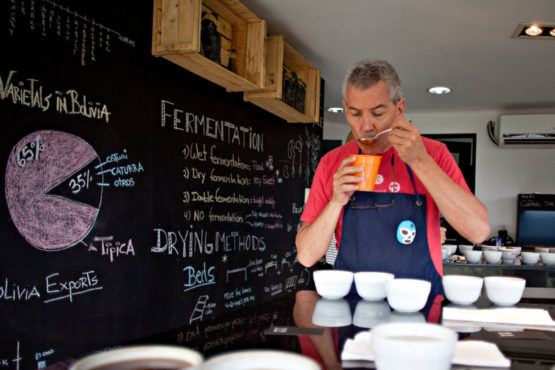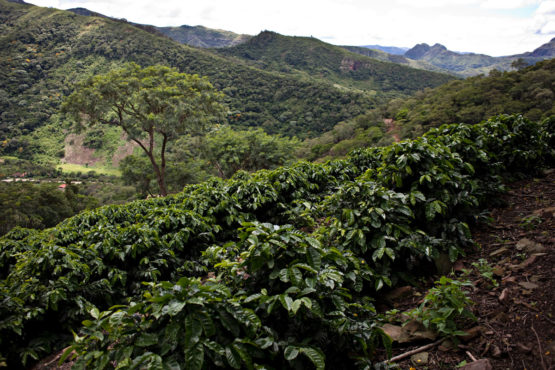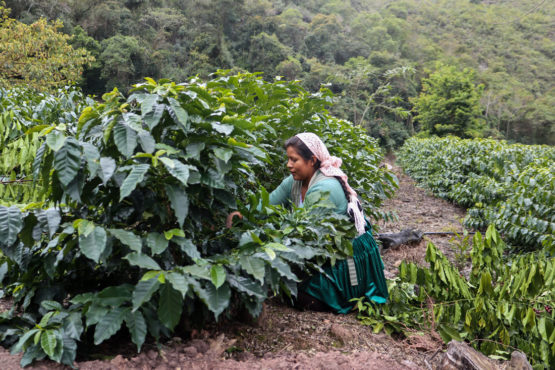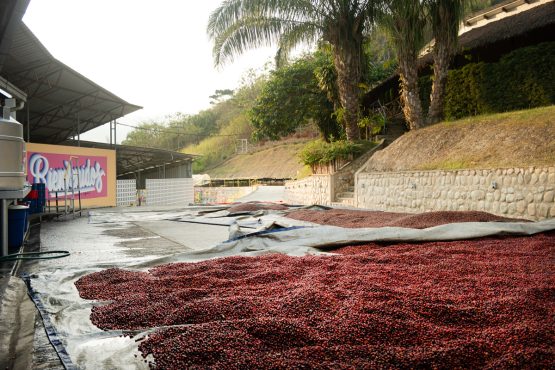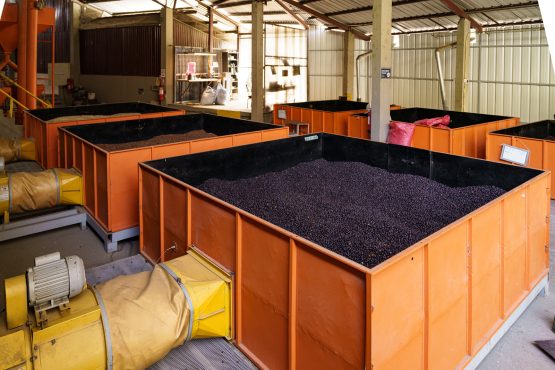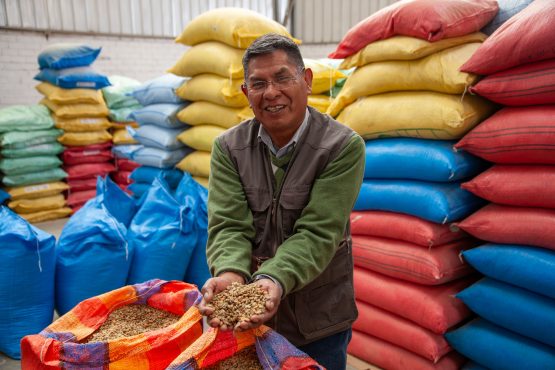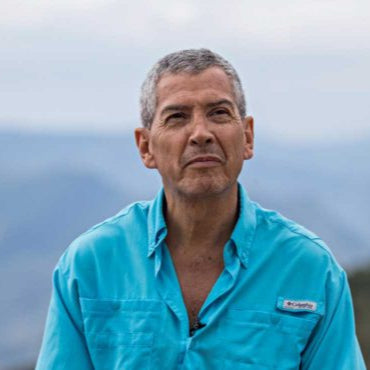
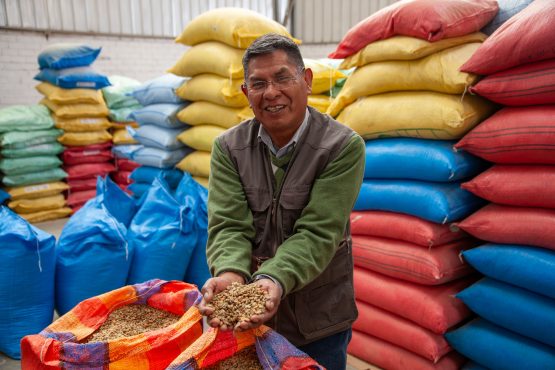
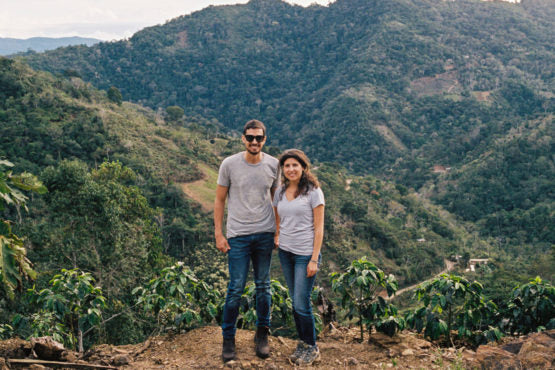
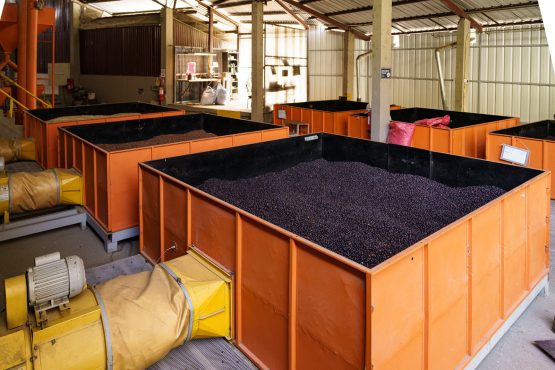
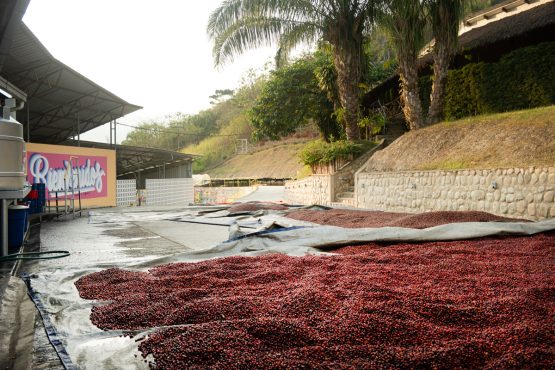
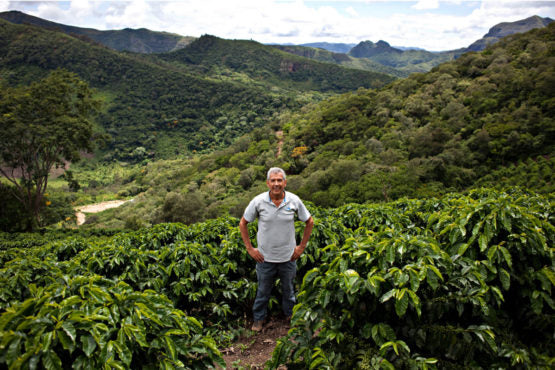
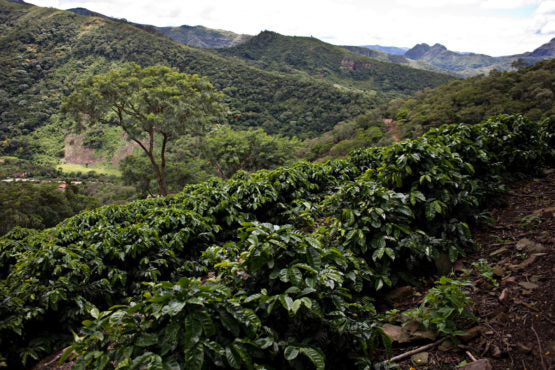
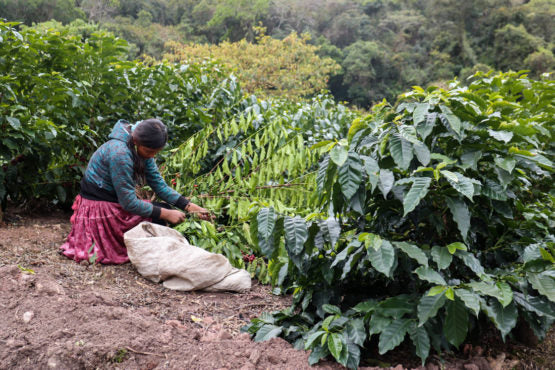
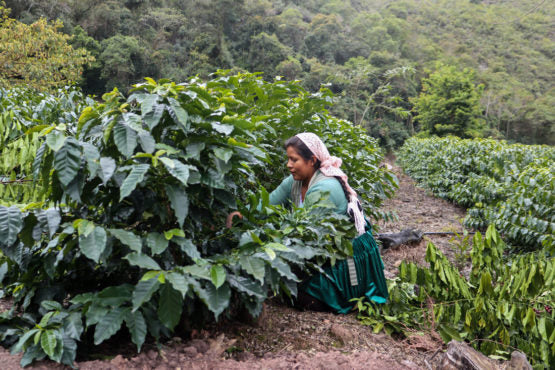
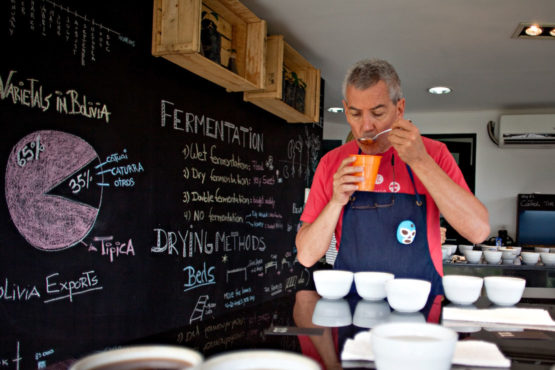
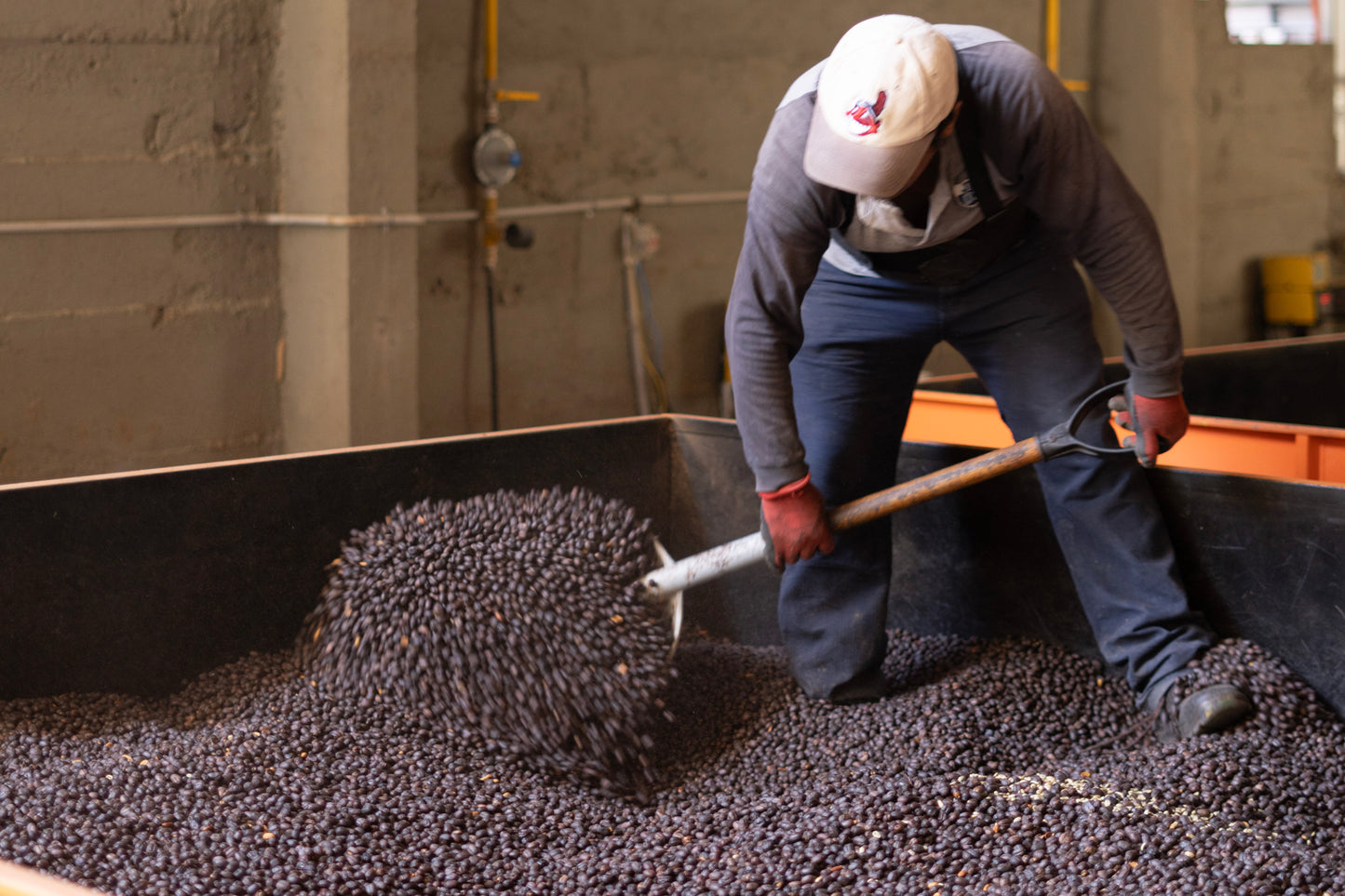
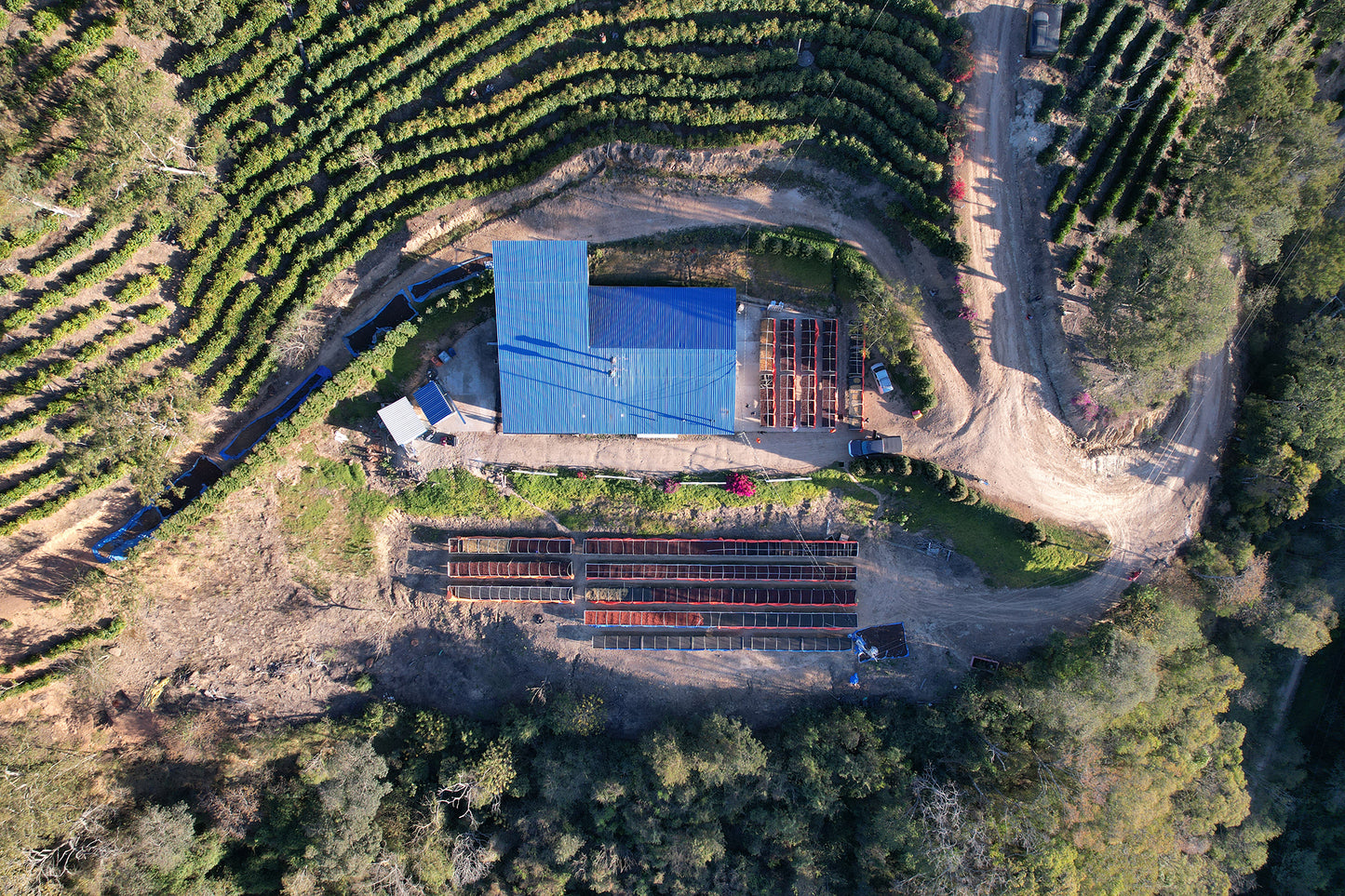
This coffee’s roasted in our filter style — meaning it’s designed to shine as black coffee rather than with milk. That doesn’t mean you have to brew it as a pour-over though. You can make it however you like — espresso, moka pot, AeroPress or anything in between. We simply roast it a little lighter to highlight the bean’s origin flavours giving you a cup that’s clean, vibrant and full of clarity.
Lighter roasting keeps more of the natural acidity and sweetness intact which makes for a beautifully expressive black coffee — and this one happens to play nicely with milk too. Expect a softer balanced cup where the sweetness carries through without turning sharp.
If you prefer your milk coffee with richer caramel, toffee or nutty flavours you might enjoy our espresso range more. Those roasts are taken a little darker to bring out deeper sweetness and balance beautifully with milk.
Origin and Sourcing
?
?
?
Roast Details
?
?
?
?
?
?
?
Taste Profile
?
?
Bolivia | El Fuerte | Los Rodriguez | Java Coco Natural - When is peak freshness?
Nordic Ultra-light Roast - Roasted on Roest L100 Ultra
This 100% Java microlot comes from El Fuerte, one of four farms owned and operated by the Rodríguez family in Bolivia’s Samaipata region.
Samaipata is a relatively new coffee growing region located in the eastern department of Santa Cruz, at the foot of the Bolivian Andes. The Rodríguez family, who also own the exporting business Agricafe Bolivia, first established their business in the traditional coffee growing region of Caranavi, where they currently operate eight farms and a wet mill. In 2012 they expanded to the region of Samaipata, which is historically known for producing food crops like fruit and vegetables.
This was risky move – coffee had never been planted here before – however, Pedro recognised the region had the right conditions to produce exceptional quality coffee, with high elevations, nutrient-rich soil and a similar climate to Caranavi’s (with the main difference being Samaipata being a little less tropical and is also drier than Caranavi). After their success in growing exceptional coffee at their first farm in the region, El Fuerte, the Rodríguez family have continued investing more heavily in Samaipata, planting three more farms and building a wet mill to process the coffee.
Samaipata means ‘Rest of the Heights’, and is a small, picturesque town. A scenic road that runs along a beautiful river leads to the town centre, attracting Bolivians and tourists alike. It is a popular base for nature walks and the World Heritage El Fuerte Andes ruins, after which the farm was named. The valley surrounding the town ranges between 1,600-1,800 meters above sea level, and has a fairly extreme climate. During the day the temperature is 25-30°C, dropping to as low as to 8-10°C during the night. This slows down the ripening of the coffee cherries, allowing the sugars of the fruit to concentrate in the flesh and bean, which in turn helps produce an incredibly sweet and complex coffee.
El Fuerte is 19.4 hectares in size and sits at 1,526 metres above sea level. The farm sits about 20km east of the town of Samaipata on the southern edge of the Amboro National Park, which is characterised by great diversity and biological richness, with plentiful forests, waterfalls and exotic birds. It also protects El Fuerte from strong winds and high temperatures, and the waterways in the valley help regulate the lower temperatures and keep frost away. Today, the farm is managed by Ángel Aguilera, who lives on the farm with his wife and family. Although it mostly produces Caturra, Ángel and Pedro have trialed several varieties on this farm, including Gesha, Pacamara, Java and Batian. This particular lot is 100% Java.
Java is a coffee variety with a long history of cultivation across the globe. Its name comes from the Indonesian island of Java, where it was first introduced directly from Ethiopia by the Dutch in the early 19th century. From there, it has become popular in West Africa and Central America, where it has thrived as an interesting alternative to the Gesha variety. Java has the potential to be quite profitable to small coffee farmers, thanks to its incredibly distinct flavour profile and high cup quality, and its high tolerance to coffee leaf rust and coffee berry disease. It was originally thought to be a Typica selection, but recent genetic testing revealed it is closely related to an Ethiopian landrace variety called Abysinia.
HOW THIS COFFEE WAS PROCESSED
Pickers from the Samaipata community carefully handpick the coffee at El Fuerte every day during the harvest. These pickers have been trained to select only the very ripest cherries and pass through the farm every day to ensure cherries are only picked at their prime.
This coffee was carefully picked and processed on the same day at the Rodríguez family’s wet mill located at one of their nearby farms, El Fuerte. Pedro draws a lot of inspiration from the wine industry in his approach to coffee production, and is always innovating and trialling different processing techniques. This lot was processed with experimental techniques, part of the Rodriguez’ family’s long term strategy to achieve the greatest distinction and diversity in their special lots. As Pedro’s daughter, Daniela shares:
“We’re keeping a registry of all the data we’re compiling, to use in the coming seasons. It includes information on the types of tanks used, bacteria and yeast activity, ambient temperature and weather conditions… we’re working hard to identify the ideal processing conditions for each variety and farm.”
Cherries for this lot were delivered to Agricafe’s state of the art mill El Fuerte in the evening. After being inspected and weighed, the coffee cherry was carefully sorted by weight using water, and floaters were removed. Following this, the coffee was disinfected, in a similar process used for wine grapes. It was then carefully washed and laid out to dry on patio for 48-72 hours, before being placed in one of Buena Vista’s ‘stationary box’ (or coco) dryers, until it reached 11.5% humidity.
These boxes are series of steel containers that are typically used for drying cocoa pods. They use a gentle flow of warm air from below the coffee bed to dry the parchment slowly and evenly. Coffee was stirred manually at regular intervals to further ensure it dried at a uniform rate.
Once the coffee was dry, it was transported to La Paz where it was rested before being milled at Agricafe’s dry mill, La Luna. At this state-of-the-art mill the coffee was first hulled and sorted using machinery, and then by a team of workers who meticulously sorted the coffee by hand under UV and natural light. The mill is one of the cleanest and most impressive we have seen – you can read more about it here.
WHAT’S IN A NAME?
To the east of the city of Samaipata, there are the ruins of the ancient ceremonial site of El Fuerte de Samaipata. Finca El Fuerte, which is named after the Fort of Samaipata, was the first of the four farms the Rodríguez family planted in Samaipata. The fort is a Pre-Columbian archaeological site, unique in that it represents the legacies of Inca, Spanish and Chanè cultures and is one of Samaipata’s main attractions.
-
Coffee in Bolivia
-
Coffee production in Bolivia has evolved significantly, with the country now producing some of the world's finest specialty coffees. Coffee is primarily grown in regions like Caranavi, which boasts high altitudes and favorable microclimates that are ideal for cultivating specialty varieties like Caturra. Bolivian coffee is prized for its unique flavor profiles, often characterized by a bright acidity, floral notes, and a refined sweetness.
In recent years, Bolivian coffee farmers, like the Aduviri, have embraced innovative farming and processing techniques to enhance quality. Efforts to improve sustainability, infrastructure, and coffee processing have bolstered Bolivia's standing in the global coffee market. However, challenges like low yields and logistical difficulties still affect the industry, making it a niche but highly sought-after origin for premium coffee buyers.
SKU: BOL0203_320g
Package Weight: 400g













